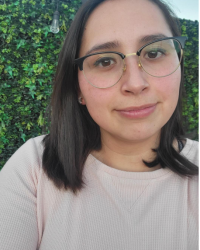Our school, a charter in Surprise, Arizona, offers many electives to our middle school students. There are Houses, and this class falls under the House of Civics; this class offers students a chance to find an issue or problem within their community. Ultimately students chose to investigate their school community and determine if the school uses too much plastic. Students are currently gathering data by creating surveys to give to students and staff on different plastic use in our school; for example, one group will be asking students what kind of pencil they use: wooden or mechanical?
Before students arrived at this part of the process, they were asked to complete an inquiry on Universal Design, “How does Universal Design help everyone?”. To frame the lesson, students were asked to describe certain images, such as an elevator and closed captions, and answer who benefits from the images. Students initially answered individuals with a disability, students were then asked to hold on to their initial answers, and as they were through each of the sources in the lesson, they were to add to their answer.
Students were given three different sources a short clip about the Americans with Disability Act from Crip Camp, Why We Need Universal Design, and a short reading on What is Universal Design. After watching and reading the text, students found that they could add to their initial answers. While they initially stated that the images they saw at the start of the class were for individuals with a disability, they ended with discussions that images were designed for everyone and gave examples of how someone that is tired might use an elevator rather than the stairs.
The lesson ended with a quick discussion on the importance of Universal Design, with an extension of creating a possible Universal Design for something they use daily. This lesson was a great lesson to frame what the class is about, which is to find an issue or problem and develop a solution from which everyone will benefit, which is what they are trying to do with their investigation on plastic use in the school.
This EAD lesson was a great way for students to engage in the process. I could not have developed this inquiry without the training from CPTL and guidance from the EAD. I understood the impact of inquiry through different pieces of training and readings that I had done in the past, but the EAD roadmap and our training with CPTL helped me to develop a process to create my own inquires that are tailored for my student and their communities, not just that the EAD has developed questions that have made it possible to included different voices and perspectives which is something that I have always strived to do in my own classroom that feels authentic when taught. I feel more confident in my ability to find sources and develop my own inquiries because of what I have done this past year with the inaugural Rebuilding Arizona Civics group; while my process still has room for refinement, I have been able to develop a process that has great guidance to make sure different voices are included.
